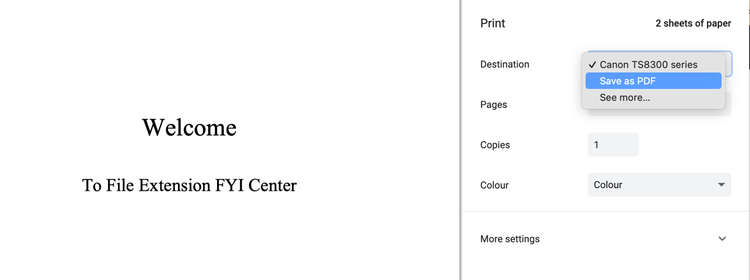Acrobat
Easy steps for converting an XPS file to PDF.
Experience greater flexibility when you share or present your XPS files. Convert XPS to PDF with these easy steps by reading our guide.

What is the best way to convert XPS files to PDF for easy printing, sharing, and presenting?
You have almost certainly heard of PDFs and probably use them frequently in your work or studies. But what about XPS? Less popular and widespread than PDFs, XPS files do a very similar job, and you may still come across them, especially if you are a Microsoft Office user or collaborate with one.
Read this guide on XPS and PDF documents, and learn how to convert Microsoft XPS files to PDF with ease.
What is XPS?
XPS stands for XML Paper Specification. XPS is a Microsoft alternative to PDF. Modern versions of Windows continue to include better support for XPS files than PDF files.
Like a PDF, an XPS file describes aspects of a document’s structure, layout, and appearance. These files are used in the Windows Office suite of products to send a document to an XPS viewer so you can see how it will look when printed. To use XPS files outside of Windows Office applications, simply print them in PDF form and then save them.
How to convert XPS to PDF.
If you use the XPS format and would like to convert your document to PDF, there are online XPS to PDF converters. Microsoft Office comes with a “Print to PDF” option that will easily handle the XPS to the PDF conversion process.
Follow these simple steps to convert your XPS files to PDF from your PC:
- In the XPS view application, click File and select Print from the drop-down menu.
- Select Microsoft Print to PDF in the dialog box.
- Click Print.
- Select the desired location for your new PDF.
To open an XPS file on a Mac using Google Drive, follow these steps.
- Upload the XPS file to your Google Drive by clicking New > File Upload and selecting the XPS file.
- Click Print.
- Select Save as PDF.
- Select the desired location for your new PDF.

PDF has become the standard for exchanging, sharing, and presenting business documents. Once saved as a PDF, you can safely and confidently transfer, store, and combine your XPS files with other documents. Convert them to PDF for compatibility with an array of software programs.
Take a minute to explore how much more you can do with Adobe Acrobat to work with, sign, merge, collaborate on, and share PDFs.
The benefits of converting XPS to PDF
Although XPS has many of the benefits of PDF, it is by far the less popular format. For example, Mac computers and mobile phones do not have built-in XPS readers. As a result, PDF has overtaken XPS to become the industry standard in many sectors of the world economy. But many people who use Microsoft software may still create XPS by default, so it is helpful for both Microsoft and Mac users to know how to convert XPS to PDF.